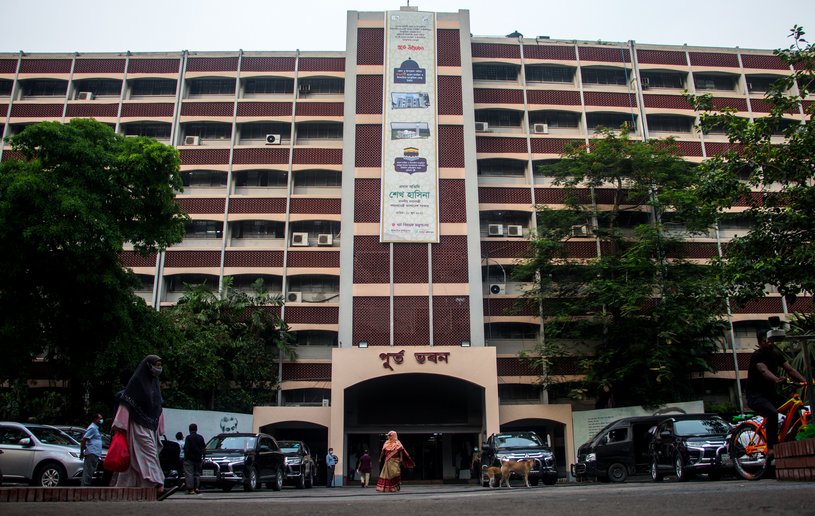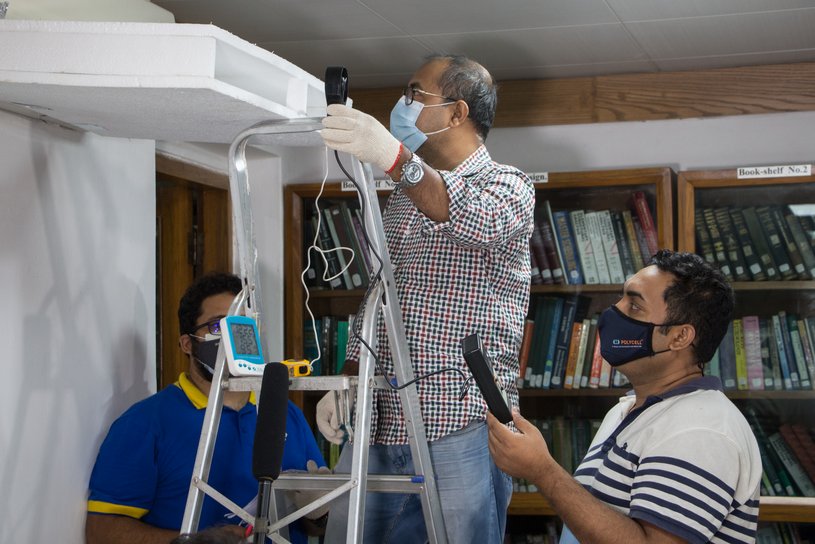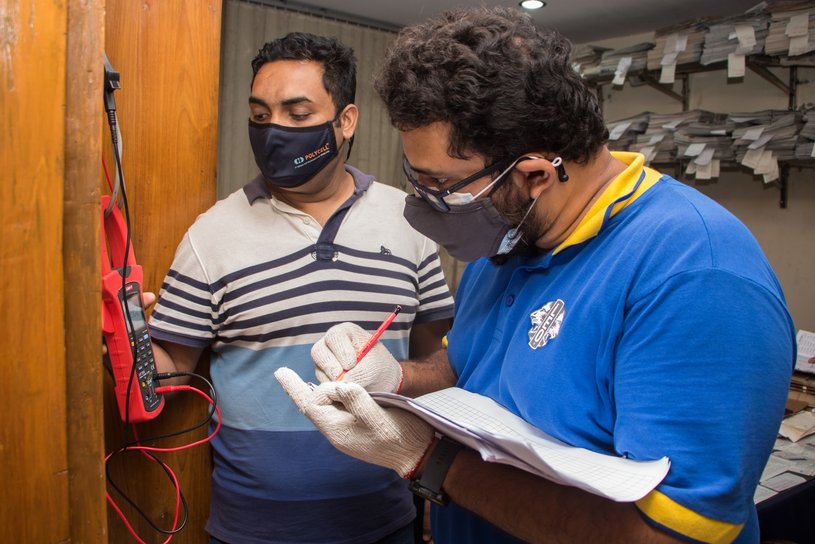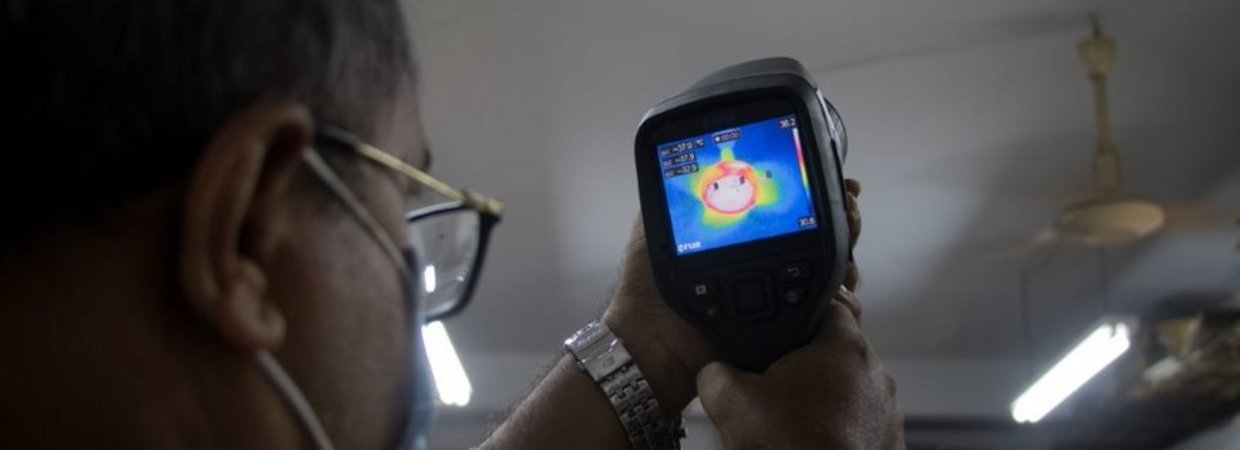8,000 tonnes CO2 – equivalent to the amount of carbon sequestered by more than 100,000 trees over ten years – could be saved, a new Proklima study from Bangladesh suggests. The energy savings potential lurking in public buildings is enormous.
It is the very first project of its kind in a country particularly threatened by climate change. In Bangladesh, the effects of a rapidly changing climate are palpable – and so is the heat emitted from commercial buildings.
The Energy Efficiency in Public Buildings (EEPB) project reveals a path to a greener and cooler future. Better insulation, the replacement of inefficient appliances, and the introduction of rooftop solar systems – these are the main recommendations formulated by GIZ Proklima and the Sustainable and Renewable Energy Development Authority (opens in a new window) (SREDA), supported by the Asian Infrastructure Investment Bank (opens in a new window) (AIIB) and the Clean Cooling Collaborative (opens in a new window) (formerly K-CEP). The numbers speak for themselves. An audit found that a retrofitting of 250 selected buildings in Dhaka alone could result in electricity savings of an astounding 11 to 15 million kWh. This is equivalent to the energy used in a year by 1,000 homes (!) in Bangladesh.
It is a timely insight. With a rapidly growing economy and population, energy consumption, too, is on the rise in Bangladesh. In 2015, its government announced that, up to 2030, it aimed to reduce primary energy consumption by 20%. Ambitious visions require concrete action.
Picture Building
 Image: ©GIZ Proklima
Image: ©GIZ ProklimaFirst steps towards energy efficiency
In the light of this vast challenge, the EEPB pilot programme was launched in December 2019. Despite pandemic-related obstacles during the implementation, a strict itinerary was followed.
First, 12 government office buildings were selected, some of which are directly maintained by the Public Works Department (PWD) under the Ministry of Housing and Public Works.
As of today, more than 13,000 public buildings are owned by the PWD. The reasoning was straightforward: If the audits indeed revealed that there were massive energy savings to be found in PWD-maintained buildings – then scaling the pilot project would not only drastically reduce electricity expenses, but also CO2 emissions.
Second, two-step audits were conducted. Level 1 walk-through audits were followed by Level 2 energy audits in line with international ASHRAE standards. As our energy consumption changes with the seasons, the audits took place both during winter and summer months. The efforts, at last, paid off, as can be seen from the picture gallery below.
Insights
Block 2
Today, the building sector in Bangladesh accounts for about 35% of the total electricity consumption. A "business-as-usual" attitude would not only further accelerate climate change in a country already heavily affected by its adverse impacts; it would also be costly. Ignoring the audit recommendations would mean missing out on a yearly reduction of electricity expenses amounting to USD 1.3 to 1.8 million.
The findings at a glance
This video is being blocked because of your cookie settings.
Quote 1
"This initiative will ultimately help our nation to manage energy efficiently."
Block 3
The proposals are practical in nature. To facilitate their pursuit, EEPB has identified the best available technologies (BAT) in terms of GHG emission savings potential, energy and cost efficiency, lighting, and photovoltaic power (see link below).
Picture Team
 Image: ©GIZ Proklima
Image: ©GIZ ProklimaBlock 4
For the technology rollout to succeed, broad coalitions will have to be forged. The EEPB project witnessed cooperation across different sectors. It is not only up to policy-makers to adopt new regulations and building codes. The private sector, too, must play its part by investing in energy-efficient solutions. Here, the Green Cooling in Public Procurement study (see link below) should be of help; it was written for the very purpose of eradicating barriers in procuring climate-friendly cooling appliances.
Quote 2
"Efforts must continue."
Block 5
Keeping this multi-stakeholder platform alive will be one of the key challenges in the years to come. "Taking stock is just the beginning," the audit team suggested during their final presentation. Next in line would be a nation-wide awareness campaign for energy efficiency in public buildings – a milestone to which this article hopes to contribute.
Information
The audits were conducted as part of the activities of Proklima, a programme within the Deutsche Gesellschaft für Internationale Zusammenarbeit (GIZ) GmbH. As per the request of the Sustainable and Renewable Energy Development Authority (SREDA), GIZ has received a grant from the Clean Cooling Collaborative (formerly K-CEP) to realise a pilot project on Energy Efficiency in Public Buildings in Bangladesh (EEPB). Its implementation was further supported by the Asian Infrastructure Investment Bank (AIIB).


 Image: ©GIZ Proklima
Image: ©GIZ Proklima